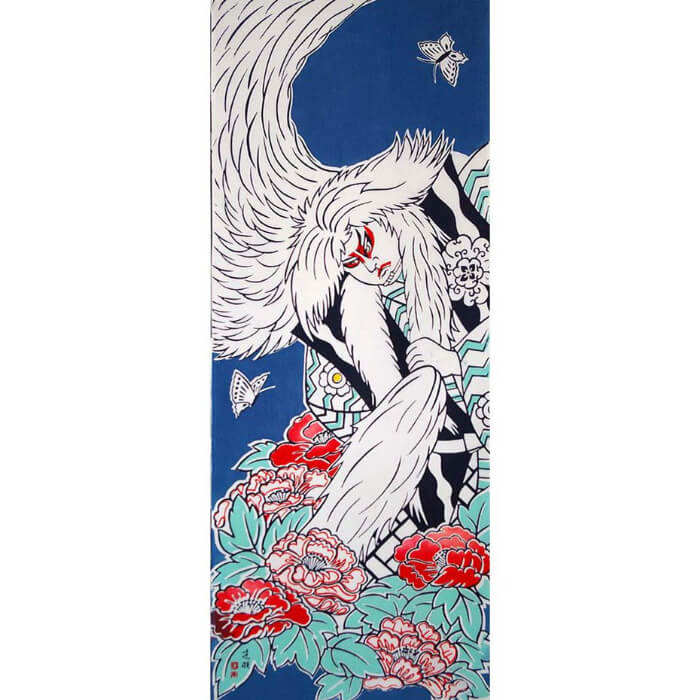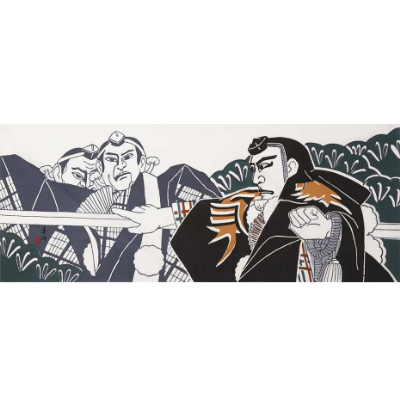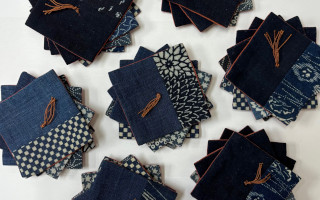
【KABUKI Miscellany】 Episode 11 : Stage Rehearsal / Narrated by Tateo Okido
Hello! We are Asanoha, a tenugui specialty shop located in AzabuJuban, Tokyo.
We’re delighted to share a collection of intriguing stories related to Kabuki. These tales are narrated by Mr. Tateo Okido, an expert in Kabuki and the artist behind the original designs of our Kabuki-themed tenugui. Please enjoy this special series, Kabuki Miscellany, presented by Mr. Okido.
Kabuki Miscellany – Episode 11 : Stage Rehearsal
I once had the rare opportunity to attend two public viewings of kabuki stage rehearsals — organized as charity events following the Tōhoku and Kumamoto earthquakes at the Shōchiku-za Theatre in Osaka, under the auspices of the “Kansai Kabuki-lovers Association,” and realized through the initiative of the actor Nizaemon Kataoka.
Normally, rehearsals are not open to the public: the first-floor auditorium is reserved for staff, directors, and production personnel, while only the second floor and above are open — with unreserved seating and a uniform admission fee. All proceeds were donated to earthquake relief.
At the start we were reminded by Nizaemon-jō that this was a serious rehearsal, not a performance: no applause, no chatter, no calls — silence required. Once the auditorium fell quiet, the rehearsal began. On stage, actors dressed simply in yukata quietly moved to their positions. Each took their mark — stage left, right, center back — and proceeded to work through their entrances, poses, and staging. At the same time, carpenters hammered away at set pieces, adjusting doors and building structures — the stage itself was alive with sound and motion in what must have been one of the noisier rehearsals I have ever witnessed.
Then came the main rehearsal of the lead roles: the principal actor (the zatō) would call in his supporting actors, instructing them where to stand, how to move, how to interact — “Come in here,” “Face this way,” “Move just so.” Once a block of rehearsal was finished, the zatō would draw certain supporting actors aside for a quiet review — nodding in approval for some and offering stern feedback to others. From even a distance, one could sense the delicate balance being orchestrated, the subtle art of alignment between actors, space, and movement. In that sense, the zatō functions as director, choreographer — and lead actor all in one.
A staff director watched from the first floor, offering guidance to ensure the overall flow — timing, movement of extras, placement of props and stage‑hands, entrances and exits, transitions. But they refrained from critiquing the subtleties of acting or expression.
Unlike modern or experimental plays, classical kabuki relies on solid rehearsal: the lead sets his positions and the entire troupe crafts scenes so that the lead’s presence stands out and the ensemble’s harmony fills the stage. Watching that process made clear how a troupe’s teamwork breathes life into the performance. And when I later watched the actual performance, I could feel how much the rehearsal had shaped the final result — enhanced by refinements made after that initial run‑through.
Observing a kabuki stage rehearsal offers a different kind of pleasure. It reveals the gradual construction of a performance — the artifice behind the art, the members’ dedication, their unease and effort. I hope, whether by charity or by deliberately scheduling open rehearsals, that theatres will again offer more opportunities for the public to witness these behind‑the‑curtain moments.
At our shop “Asanoha,” we offer a tenugui design called Sōzarai. It was inspired by historical records of Edo‑period stage rehearsals — the energy, the tools, the quiet tension — and remains a testament to the timeless atmosphere of kabuki rehearsal passed down to the present day.
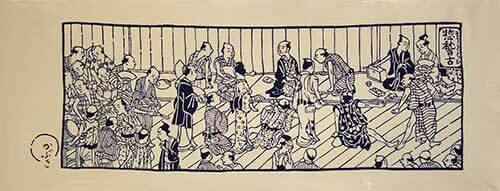
Tenugui : Sōzarai ( Kabuki Reheasal)
Although they are not currently available, we previously offered tenugui designs featuring elements from Edo-period kabuki stages, such as ōdōgu (stage sets) and tokoyama (wig masters). We hope to bring them back in the future—stay tuned!
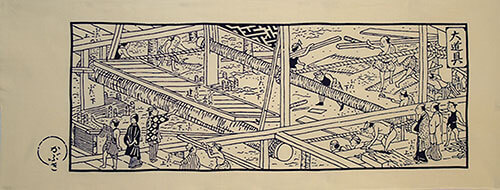
Tenugui : Ōdōgu (Stage sets)
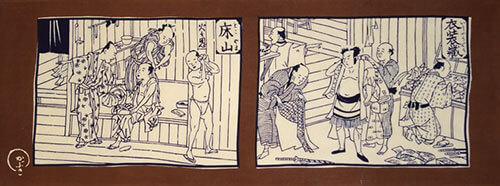
Tenugui : Tokoyama (Wig masters)



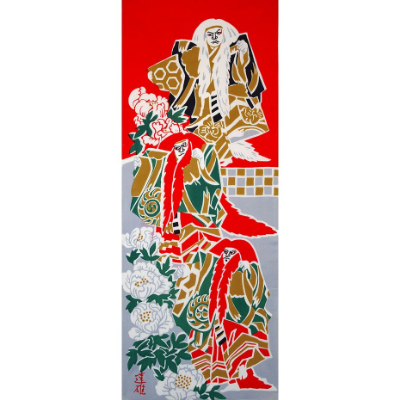


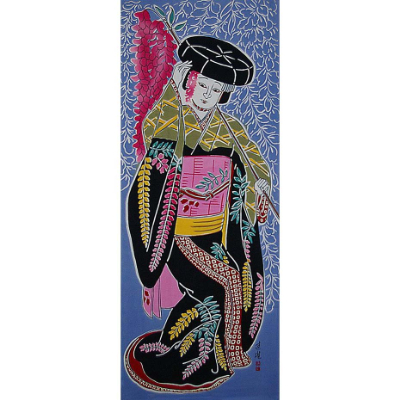



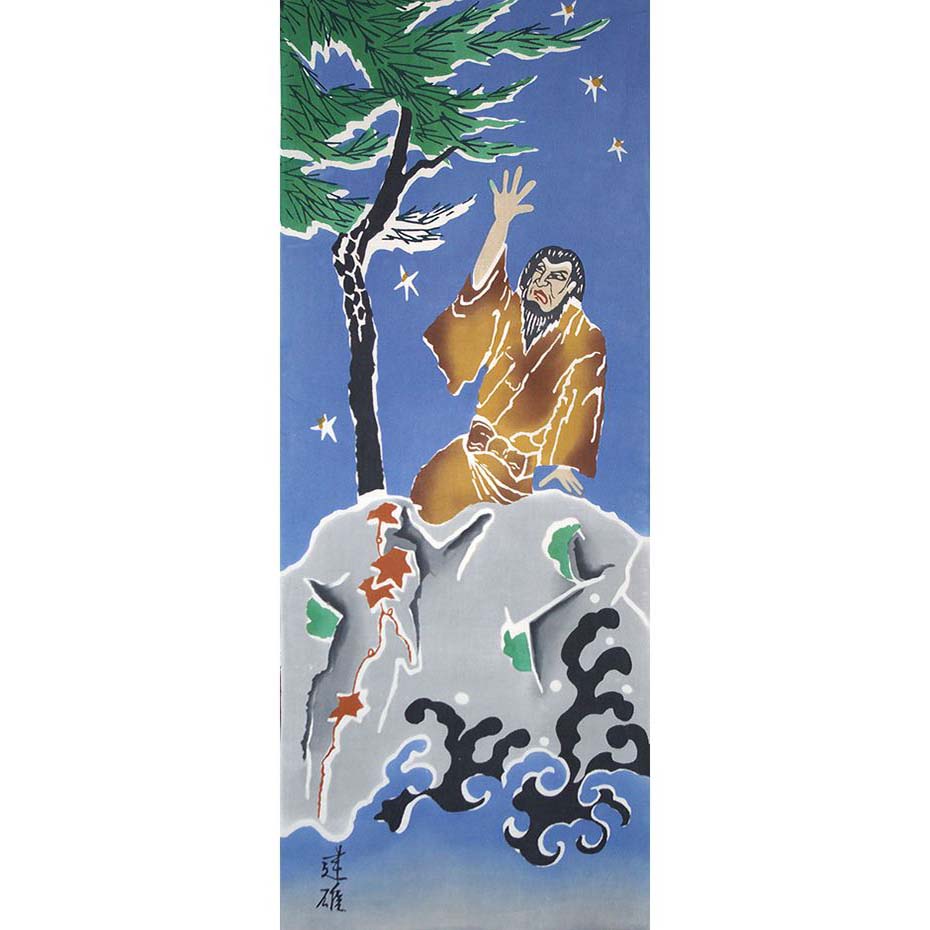
」.jpg)

